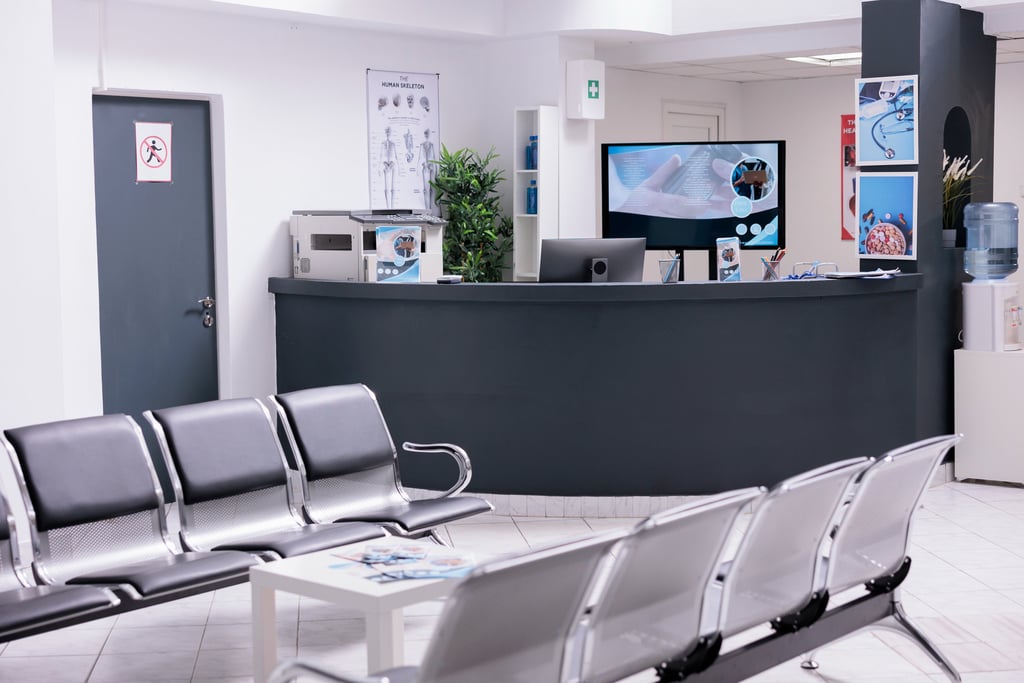Top 5 Surgical Instruments Every Clinic Needs
Discover the five essential surgical instruments every clinic needs to boost precision, streamline procedures, and elevate patient care.


In any clinical setting, having the right surgical instruments on hand is crucial for ensuring efficient procedures and optimal patient outcomes. Whether you’re managing a busy clinic or setting up a new surgical suite, investing in quality equipment not only enhances patient care but also solidifies your practice’s reputation. In this blog post, we break down the Top 5 Surgical Instruments Every Clinic Needs.
1. Scalpels and Surgical Blades
Why They’re Essential:
Scalpels are the cornerstone of any surgical procedure. These precision instruments allow surgeons to make accurate incisions, whether during minor surgeries, biopsies, or larger procedures.
Key Features to Look For:
Ergonomic Design: A comfortable handle minimizes hand fatigue.
High-Quality Blade: Constructed from stainless steel or other durable materials to maintain sharpness.
Versatility: A range of blade sizes and types to cater to different procedural needs.
Usage Tip:
Keep a supply of pre-sterilized, disposable blades to ensure both efficiency and hygiene, which is critical in avoiding cross-contamination.
2. Forceps
Why They’re Essential:
Forceps are indispensable for holding, manipulating, and securing tissues during surgery. They come in various forms—such as tissue, dressing, and hemostatic forceps—each designed for specific applications.
Key Features to Look For:
Precision Grip: Designed for controlled handling and minimal tissue trauma.
Material Quality: Durable and corrosion-resistant for long-term use.
Variety: Both straight and curved types for enhanced accessibility during procedures.
Usage Tip:
Regular inspection and proper sterilization are required to maintain the instrument’s integrity, ensuring reliability in critical moments.
3. Needle Holders
Why They’re Essential:
Precision in suturing is paramount, and needle holders facilitate this by providing a firm grip on the needle. This instrument is particularly vital for closing incisions and performing delicate tissue repairs.
Key Features to Look For:
Locking Mechanism: Allows for a secure hold on the needle, enabling accurate suture placement.
Ergonomic Handle: Enhances maneuverability, reducing the risk of hand fatigue.
Balance and Weight: Proper balance is necessary for surgeons to control fine movements during suturing.
Usage Tip:
Opt for a design that offers both flexibility and durability—qualities that prove indispensable during prolonged procedures.
4. Hemostats
Why They’re Essential:
Hemostats are used to control bleeding by clamping blood vessels during surgery. They prevent blood loss and provide surgeons with better visibility of the surgical site.
Key Features to Look For:
Strong Locking Ability: Ensures that once clamped, they firmly hold tissues in place.
Smooth Jaw Design: Minimizes tissue damage while effectively controlling blood flow.
Versatile Application: Available in various lengths and sizes for different procedures
Usage Tip:
Regular maintenance, including sharpening of the jaws, can ensure that your hemostats remain effective over time. Make sure to use them in conjunction with other instruments for maximum efficiency.
5. Retractors
Why They’re Essential:
Retractors are used to hold incisions or wounds open, providing surgeons with improved visibility and access to the surgical area. They are crucial in both minor procedures and complex surgeries.
Key Features to Look For:
Different Types: Hand-held versus self-retaining retractors, depending on the procedure’s complexity.
Adjustable Design: Allows for a customized fit according to the surgical site.
Durability and Sterilizability: Constructed from high-quality materials that withstand
repeated use and sterilization.
Usage Tip:
Choose retractors that offer flexibility and stability to maximize exposure of the surgical area, thereby reducing operative time and enhancing overall safety.
Conclusion
Setting up your clinic with these essential surgical instruments not only facilitates smoother, more efficient procedures but also boosts overall patient safety and care quality. From scalpels and forceps to needle holders, hemostats, and retractors, every piece plays a critical role in everyday surgical tasks.By investing in quality equipment and ensuring proper maintenance and sterilization protocols, clinics can achieve higher standards of care and operational efficiency. If you’re looking for a trusted supplier for high-quality surgical instruments, consider exploring NishatSurgical.pk, where precision and reliability meet affordability.